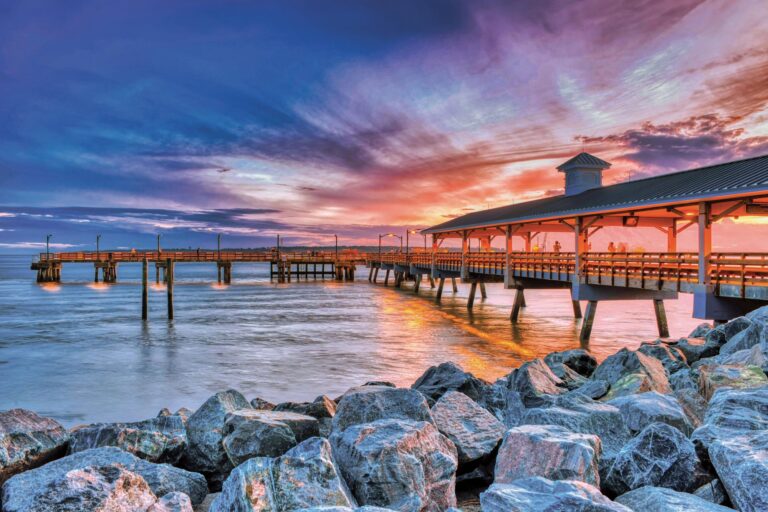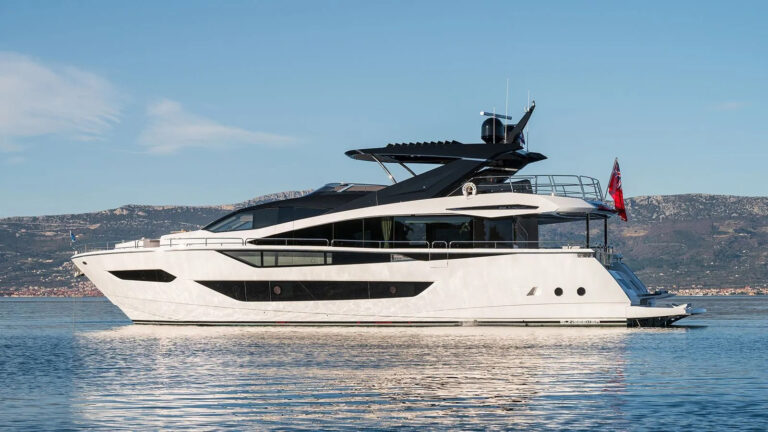Several years ago, a cruising yachtsman with considerable offshore experience commissioned his first custom boat. He had owned, among others, a Swan 76 that circumnavigated. Though he hadn’t been aboard all the time, he had sailed her sufficiently in stormy weather to find her a bit disquieting in big seas. As a longtime admirer of Sparkman & Stephens, which designed the 76, he asked the company for a larger, more stable, more comfortable offshore yacht. The result is Zìngaro, Italian for gypsy, delivered in late July by her builder, Robert E. Derecktor Shipyards in Mamaroneck, New York.
I was absolutely delighted with Zìngaro’s performance when I first sailed her, during her trial period in July on Long Island Sound. The crew, designers and yardmen were still sorting out gear and experimenting with the set of her new Quantum sails, right out of their bags. Yet she showed the speed of a thoroughbred, surpassing her designers’ calculated expectations. With her semi-balanced deep spade rudder steered through cable and quadrant, Zìngaro gives a fair sense of wind and sea to the helm. For a boat her size, she’s also surprisingly sensitive, particularly to mainsail trim.
More important, in 15 to 18 knots of offshore breeze, in smooth water, she was so impressive her designers begged me not to reveal her top speed before she appeared in the Nantucket Bucket race in August, concerned that an aggressive competitor would be alerted to her threat. Now it can be told that on a close reach she made a steady 12 knots with ease, and in the puffs she peaked at better than 13.
Of course, to achieve this level of performance the client had given Sparkman & Stephens designers Bruce Johnson and Gregory Matzat a clear vision of how he would use the yacht: sailing to remote, high-latitude places. He also made equally clear that she would have to meet his uncommon personal needs (because of a diving accident some years ago, he walks with a cane). Unlike most clients, he became a full partner in the design process. He read deeply into books on naval architecture and seaworthiness, becoming conversant on the many enigmas of yacht design. After more than 18 months of give and take, Sparkman & Stephens completed a preliminary design in early 1997 for a sloop a shade longer than 104 feet overall.
The client then asked the designer to squeeze a bit more performance out of her. The firm’s solution was to stretch the hull, at the bow and stern, to 1111/2 feet and tweak the lines, but without changing the overhangs and maximum beam or expanding the accommodations. The first result was a longer waterline for higher speed. The designer also set the engine just abaft the mast and shifted the chain locker aft, which, combined with the very light ends, concentrated significant weight amidships. All that-plus a mast, boom, rudder and stock of carbon fiber-greatly reduced pitching, further enhancing speed in a seaway.
Then, contrary to the typical demand for shoal draft, the client suggested the keel might not be deep enough to meet his performance and stability targets. Sparkman & Stephens designed a keel with a foot more draft, shortened the chord, optimized the foil shape and leading edge angle, and added a bulb with less ballast and a small drooping swallowtail to improve hydrodynamic efficiency. The new keel has a higher aspect ratio and less wetted surface area. The additional stability allowed the designers to slightly increase the sail area. With all this intellectual exercise, however, Zìngaro is not an extreme record breaker the likes of Mari Cha III, but a solid, sensible performance cruiser with a displacement/length of 126 and a sail area/displacement of 19.6, more than respectable numbers for a 112-foot sloop.
Johnson and Matzat also consulted with Sparkman & Stephens’ founding guru, Olin Stephens. Not that they lacked confidence in their work, but they have a mutual desire to maintain the firm’s long-standing guiding principle of creating seaworthy hulls that can maintain speed in offshore conditions. While Stephens might have preferred fuller, more traditional lines, he suggested only minor changes, such as the addition of a bit more flare to the bow.
When the design was signed off, Sparkman & Stephens sent bid packages to several yards for quotes in composite or aluminum construction. Derecktor won the bidding contest because of its proven construction quality in aluminum, and because it has built 32 Sparkman & Stephens boats over the years, creating easy lines of communication between the firms. In Zìngaro, Derecktor’s aluminum construction is impeccable, as is its engineering and finish. (She was built to meet MCA requirements, but has no certificate.) Fortunately, the stretching nearly 8 feet at the ends added little to the construction cost, as it consumed essentially aluminum, paint, teak decking and air.
Zìngaro’s general arrangements plan features a pilothouse with a raised dining area to port. The pilot station to starboard, with slightly insufficient headroom, permits unobstructed views from a seat that swivels between the helm and chart table. The full-beam saloon, several steps down, centers on a large retracting plasma television screen. The room’s longitudinal dimension was limited to leave ample volume aft for the master stateroom, two twin guest staterooms (one converts to a double) and a Pullman-berth cabin with a treadmill under its sole for the owner’s daily exercise regimen. Forward are crew’s quarters, with mess. The captain’s cabin is set comfortably aft, near the mast. The galley has two freezers and two fridges for long passages to remote places (Patagonia was on her early agenda after being shown at the Ft. Lauderdale International Boat Show in October).
Interior joinery-beautifully realized by Derecktor’s craftsmen-is all teak in a clean Scandinavian style. It is a modified Pieter Beeldsnijder style, as the owner, who admires Beeldsnijder’s work, bought some joinery detail drawings from him for Sparkman & Stephens to adapt. The elegant woodwork nicely sets off the embellishment of books, marine paintings and antique sea charts. The warm décor also features white-painted overhead around portlights, brass lamps, plentiful stowage and cedar-lined closets, and lots of soft overhead lighting. There are well-positioned handholds for the owner’s convenience.
The engineroom-with convenient sitting, if not standing, headroom-houses the soft-mounted Caterpillar main engine, watermakers and other peripherals, and is adjoined by a separate electrical room. Sound and vibration control is first-rate. Routine access is from the crew’s quarters, but two large hatches in the saloon sole allow access for major work.
Topside, Zìngaro has an alfresco entertainment area on the bridge deck under a permanent canopy. The steering cockpit features a central navigation console, plus consoles for the twin wheels with compass, sailing instruments, engine, propeller pitch and thruster controls. Helm seats are on balconies extending over the coaming for easy sail-trim reading. The sail-trim cockpit has two hydraulic primaries and four secondaries conveniently mounted on the coamings. A large, hydraulically actuated stern platform completes the package.
After her turnover to the owner, Zìngaro sailed to Newport, Rhode Island, then joined 19 other starters in the one-day Nantucket Bucket (the second day was canceled in the face of threatening weather). Starting the 20-mile triangular course half an hour after the 105-foot Whitehawk, Zìngaro finished a bowsprit length behind her. She nearly caught the 137-foot Mirabella III, which started three minutes before her. And she handily beat the new 112-foot Royal Huisman-built Pamina, which started with her, by almost 12 minutes. She placed fifth in the fleet on handicap, and the Nantucket crowd was duly impressed. So was Zìngaro’s extremely, shall we say, satisfied owner.
Of course, Zìngaro’s big-boat speed and small-boat sensitivity mean that to maintain her peak performance offshore, her professional crew under Capt. Clive Youlten will have to work hard keeping her in trim. On this highly sophisticated yacht, however, “work hard” means occasionally pushing a hydraulic control button, an action that in this age of automation has not yet reached the level of personal sacrifice.
Contact: Sparkman & Stephens Design, (212) 661-1240; fax (212) 661-1235; design@sparkmanstephens.com; www.sparkmanstephens.com.









